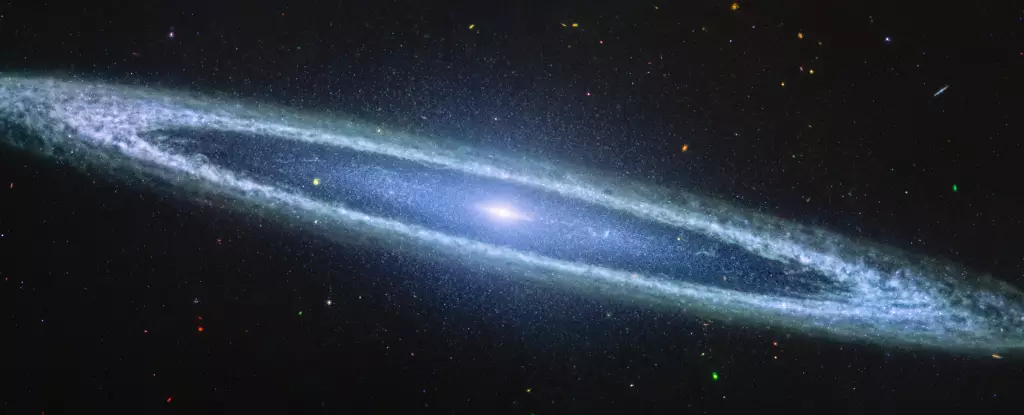NGC 4594, widely recognized as the Sombrero Galaxy due to its unique dust ring resembling the brim of a hat, continues to defy conventional astronomical classifications. Discovered by Pierre Méchain in 1781, this galaxy has captivated the attention of astronomers for centuries. Located approximately 28 million light-years away from Earth, the Sombrero Galaxy is classified as a spiral galaxy, yet it possesses distinct features that set it apart from its peers. Recent advancements in astrophysics, particularly the capabilities of the James Webb Space Telescope (JWST), have allowed scientists to delve deeper into its mysteries than ever before.
Prior to the advent of JWST, the Hubble Space Telescope provided some fascinating images of the Sombrero Galaxy. However, Hubble’s observations were notably limited by its reliance on the optical spectrum. The thick dust ring enveloping the galaxy’s disk cast shadows over potential star-forming regions, leaving observers uncertain about the processes occurring within. Furthermore, the bright central black hole, which plays a critical role in the galaxy’s dynamics, overshadowed many of the finer details swirling around it. This obscured view fed into the notion that the dust ring might be harboring active stellar nurseries, much like those documented in other galaxies.
The capabilities of the JWST transform our comprehension of NGC 4594. With its advanced Mid-Infrared Instrument (MIRI), the telescope can penetrate through the dust, revealing hidden galactic structures that previous instruments could not discern. The latest images taken by JWST unveil unexpected formations: warm clumps of molecular gas scattered throughout the dust ring but paired with a conspicuous scarcity of young stars. This finding challenges longstanding assumptions surrounding the dust ring as a thriving domain for star formation.
Interestingly, the central region of the Sombrero Galaxy reveals a distinct feature—a flat disk instead of the anticipated halo of stars enveloping the central supermassive black hole. The black hole, although active and expelling jets of plasma, exhibits low luminosity characteristics inconsistent with the more energetic active galactic nuclei observed in other galaxies. This deviation from the norm raises important questions about the galaxy’s evolutionary history and ongoing activity.
Another intriguing aspect of NGC 4594 is its population of globular clusters. With approximately 2,000 identified globular clusters, the Sombrero Galaxy stands out as an exceptional case compared to other galaxies of similar size. These densely packed clusters of stars not only contribute to the galaxy’s aesthetic grandeur but also serve as important astronomical laboratories. Future observations are likely to focus on these structures, potentially offering insights into the formative processes of the galaxy.
The unusual abundance of globular clusters points towards a dynamic evolutionary past. Their presence may be key to understanding the processes that led to the formation of the Sombrero Galaxy, illuminating how it diverged from conventional expectations surrounding such galaxies.
As JWST continues to explore the depths of NGC 4594, a wealth of data and discoveries awaits. The initial findings challenge current paradigms of galaxy formation and evolution while opening new pathways for research. The revelations about both the dust ring’s limited role in star formation and the central black hole’s unusual characteristics recalibrate our understanding of this remarkable cosmic entity.
In the grand tapestry of the universe, the Sombrero Galaxy exemplifies the richness of diversity in galactic structures. Each observation serves as a vital puzzle piece, contributing to the broader narrative of cosmic evolution. With the ongoing exploratory efforts of the Webb Space Telescope, the quest to uncover the layers of mystery surrounding NGC 4594 promises to enrich our knowledge of the universe and our place within it. As astronomers continue to probe these enigmas, they remind us that the universe has much to teach us, especially when viewed with new eyes.


Leave a Reply